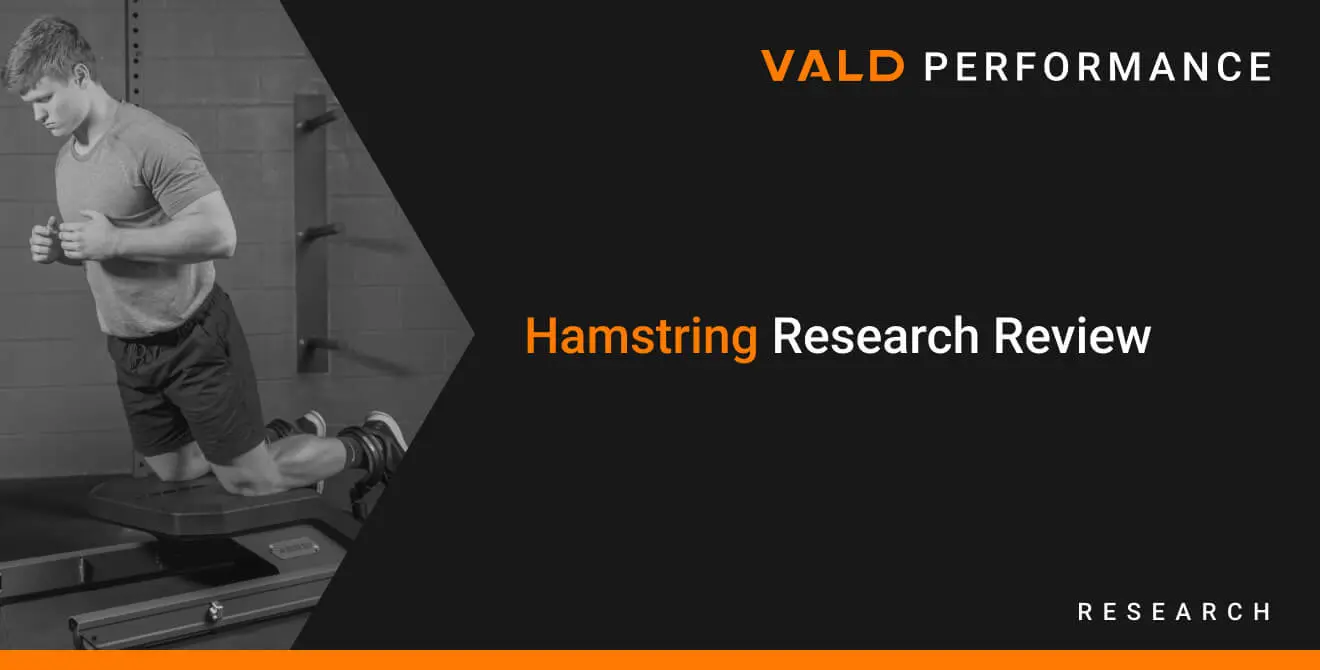HAMSTRING RESEARCH REVIEW
Available in:
EN
HAMSTRING RESEARCH REVIEW
We are commonly asked by our clients about the latest research regarding hamstring injuries and best training practices, so we’ve decided to put together a summary of some of the most significant research published in the last 12 months (updated July 2017).
Hamstring activity during 10 common exercises
Impact of exercise selection on hamstring muscle activationBourne et al. Key Takeaway: Hip-extension exercise selectively activates the long hamstrings, and the Nordic exercise preferentially recruits the semitendinosus. This two part study has implications for targeting specific muscles during rehabilitation and training.Part 1: The activity of the lateral hamstrings (LH) vs the medial hamstrings (MH) was measured via EMG during 10 common hamstring exercises. Results showed the 45° hip-extension exercise had the highest ratio of LH vs. MH activation. While Nordic Hamstring Exercise had the lowest LH:MH ratio it also demonstrated the highest absolute activation of the LH.Part 2: The above two exercises were used to see activation via fMRI. For the 45° hip-extension exercise, the T2 changes (fluid shifts that indicate activation) were significantly greater for all other hamstring muscles compared to the biceps femoris short head. For the Nordic Hamstring Exercise, semitendinosus use(activation) was significantly greater compared to the other hamstring muscles.
Large and rapid increases in high speed running increased the odds of hamstring injury
Effect of high-speed running on hamstring strain injury riskDuhig et al.This study showed players exposed to large and rapid increases in high speed running distances (measured by GPS) from one week to the next, compared to their 2-yearly average session, have increased odds of sustaining a hamstring injury.
Hamstring and Quadriceps Strength Deficits found to be Weak Risk Factors for Hamstring Strain Injuries
Hamstring and Quadriceps Isokinetic Strength Deficits Are Weak Risk Factors for Hamstring Strain Injuries – A 4-Year Cohort Study Dyk et al.614 Professional soccer players were tested during preseason on an isokinetic dynamometer, performing knee flexion and extension tasks at a range of speeds, and then were followed for injuries. 190 injuries were recorded over the 4 seasons, and those who became injured were very slightly weaker than uninjured players in just two of the numerous tests of strength. Despite the statistical significance of the findings, the extremely weak association between strength measures suggested that isokinetic dynamometry could not be relied upon to predict hamstring injury.
Kicking induces eccentric knee flexor weakness
Drop punt kicking induces eccentric knee flexor weakness associated with reductions in hamstring electromyographic activity Duhig et al.36 males were assigned to a control group that did pre and post dynamometry testing and a kicking group which did pre and post dynamometry testing as well as 100 drop punt kicks. The Kicking group displayed significant reductions in eccentric strength and hamstring muscle electrical activity in eccentric contraction modes, with little to no change in the strength or activation of concentric contractions. The loss of eccentric strength was correlated with the reduction in EMG of the lateral hamstrings but not the medial hamstrings.
Nordic Hamstring and Hip Extension exercises both stimulate significant increases in fascicle length
Impact of the Nordic hamstring and hip extension exercises on hamstring architecture and morphology: implications for injury prevention Bourne et al.30 men were split into 3 groups. Control (CON), Hip Extension (HE) and Nordic Hamstring Exercise (NHE). The HE and NHE groups did a 10 week progressive loading training program. Biceps femoris fascicle length (a bunch of muscle fibres bound together) and eccentric knee flexor strength significantly increased for both training groups compared to the control. Both the hip and knee based exercises were shown to have significant positive effects on these proposed risk factors for hamstring injury.While both exercises showed significant muscle hypertrophy for semitendinosus, the hip extension showed greater hypertrophy of the biceps femoris long head muscle compared to NHE and CON groups. Hip extension exercises appear to have greater effects on biceps femoris long head size than the Nordic exercise and this may have implications for rehabilitating biceps femoris strains which sometimes cause atrophy of this muscle.
Shorter hamstring fascicles in previously injured limb at the end of competitive season
Effect of Prior Injury on Changes to Biceps Femoris Architecture Across an AFL Season Timmins et al.Thirty elite Australian football players, twelve with a history of unilateral hamstring injury, had their biceps femoris long head (BFlh) architecture assessed at approximately monthly intervals. Players with a history of hamstring injury ended the season with shorter fascicles than the start. Limbs without a history of hamstring injury displayed similar BFlh fascicle lengths at the start and end of the season.These results suggest that previously injured limbs do not respond to Australian rules football in the same way that uninjured limbs do and this is consistent with the possibility that once injured muscles are significantly inhibited, even after conventional rehabilitation.
The functional significance of hamstrings composition: is it really a “fast” muscle group?
Evangelidis et al.Investigating the muscle fibre type and composition of the biceps femoris long head (BFlh), strength tests and muscle biopsies were performed. The researchers concluded that the biceps femoris muscle is not a ‘fast muscle’.
Hamstring injuries in elite Gaelic football: an 8-year investigation to identify injury rates, time-loss patterns and players at increased risk
Roe et al.Hamstring Strain Injuries are the highest occurring injury in Gaelic football with each club suffering approximately 9 per season. The incidence of injury has increased 2 fold in 2012-2015 compared to 2008-2011.
Hamstring injuries have increased by 4% annually in men’s professional football
Ekstrand et al36 UEFA Clubs were followed for 13 years for injuries. A 4% (R2=0.450, b=0.040, 95% CI 0.011 to 0.070, p=0.012) annual increase was seen in HSIs. This increase was only in training injuries not match play. Begs the question, how can we decrease training injuries without compromising match performance?
